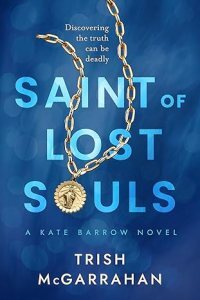Wake Me Up When It’s March
 If it weren’t for my aversion to honey, I’d believe that in a former life I must have been a bear. As soon as the clocks go back in the autumn, I sleep a little longer each night, peaking at ten hours in midwinter. I hate the short days and long nights of winter.
If it weren’t for my aversion to honey, I’d believe that in a former life I must have been a bear. As soon as the clocks go back in the autumn, I sleep a little longer each night, peaking at ten hours in midwinter. I hate the short days and long nights of winter.
Fortunately, being a part of Hawkesbury Choir brightens the dark days of November and December as we practise uplifting Christmas music and sing at Advent services. The week following Christmas Day, I look forward to celebrating my mum’s birthday on New Year’s Eve.
 Identity parade of Hawkesbury Choir – I’m on the far right of the picture (Photo by our choirmaster Ben Humphries)
Identity parade of Hawkesbury Choir – I’m on the far right of the picture (Photo by our choirmaster Ben Humphries)But once we’re into the new year, the only highlight of the rest of the winter is my birthday mid-January.
After that, I’d be happy to hibernate until 1st March—the first day of meteorological spring.
What is hibernation exactly? It’s not just a long lie-in, but a special form of sleep known as torpor.
Torpor conserves energy by reducing the body’s temperature, pulse rate, breathing frequency, metabolism, and brain activity. The dwarf lemur, the only primate to hibernate, lowers its heart rate from 300 beats per minute 6 and its 60 breaths per minute to one every ten minutes, and reduces its brain activity so much that it is undetectable.
Even in torpor, staying alive consumes a lot of energy, substantially reducing the hibernator’s body weight. A squirrel, for example, typically loses 40% of its body weight during its winter sleep.
But that’s good news. What better way for humans to shed the evidence of an over-indulgent Christmas than by spending January and February asleep? Who needs expensive Ozempic when you can just sleep excess weight away? Christmas feasting would then become a wise survival technique rather than an act of greed and decadence.
Apparently, the deep sleep of hibernation can boost your natural immunity, thus lengthening your waking life.
A further health benefit is that the lack of social mixing while we sleep would reduce disease transmission. That would do away with the frightful 100-day cough and four major viruses that have overwhelmed the NHS this winter.
If you’re wondering how you’d manage to sleep for so long, any cat will be glad to show you how.
 Sleep is Dorothy’s special subject
Sleep is Dorothy’s special subjectBut it would take a lot of practice to match the staying power of the edible dormouse (glis glis). Hibernating for up to 11 months per year, it stores an enormous amount of fat during its one waking month. Hence its popularity as a tasty snack for Ancient Romans. (I knew there had to be a downside.)
So, if you don’t see me around for the rest of this month, you will know what I’ll be doing. But don’t worry, I’ll be setting my alarm for 1st March. After all, it is my husband’s birthday.
See you in the spring!
(This post first appeared as a column in the February 2025 issue of the Hawkebury Parish News.)
IN OTHER NEWS The ebook of the first in my latest cosy mystery series, Death at the Old Curiosity Shop, is currently on a special 99p/99c promotion in the UK, the USA, Australia and Canada, organised by my publisher Boldwood Books. Apologies to readers in other countries that this offer doesn’t apply to you.
The ebook of the first in my latest cosy mystery series, Death at the Old Curiosity Shop, is currently on a special 99p/99c promotion in the UK, the USA, Australia and Canada, organised by my publisher Boldwood Books. Apologies to readers in other countries that this offer doesn’t apply to you.
Meanwhile the sequel, Death at the Village Chess Club, is due to launch on Monday 3rd March, and is already available to preorder in certain formats. From launch day it will be available in ebook, paperback, hardback and audiobook.
And I’m currently writing book three in this planned trilogy, working title Death at the Village Christmas Fair, which will be published in time for Christmas 2025. I love the covers Boldwood has produced for the first two and can’t wait to see what the third cover will be like!

I’m also about to give my first talk of the year, in an online Zoom session this evening for Jericho Writers. I love helping other authors, whether by giving talks to writers’ groups or via one-to-one mentoring sessions. I’ve made many new friends this way and discovered lots of new books to read, including some that take me outside of my usual reading comfort zone.
WHAT I’M READINGThis is a new footnote to my weekly blog posts – a summary of book recommendations spanning a wide range of genres which I hope will appeal to all kinds of readers.
[image error] [image error]
This week, I’ve been reading some terrific epic fantasy fiction by Ulana Dabbs, who creates vibrant fantasy worlds rich with human emotion. A good starting point to discover Ulana’s work is Fated Daggers, a free short story, which you can download as a free ebook from her (beautiful) website at www.ulanadabbs.com. I then went on to buy her novella, The Wrath of Skaldir, which is a prequel to her trilogy set in the world of Lumi. Ulana was telling me that her next planned fantasy series will be influenced by her fascination for all things Japanese, and I am looking forward to discovering that series too when it’s ready.
I highly recommend Ulana’s work for anyone of any age who enjoys epic fantasy with feisty heroines.

I’m also excited to see that Trish McGarrahan, who I got to know last autumn, has just published her debut novel, Saint of Lost Souls, the first in her Kate Barrow series of thrillers set mainly in the US and partly in Durham, England. After a personal tragedy forces Kate to abandon her dream of becoming an archaeologist, she is working as a defence contracts administrator when she realises someone is trailing her with malicious intent – and she will not rest until she discovers the truth. I was really gripped by a pre-publication version of this tense, well-written story, which is driven by strong characterisation as well as by action. I’m now about to enjoy reading the final version, and I look forward to the next installment of Kate Barrow’s adventures. Find out more about Trish and her new book at her website,www.trishmcgarrahan.com
A terrific read for anyone who loves tense thrillers centred around strong characters in intriguing settings.





